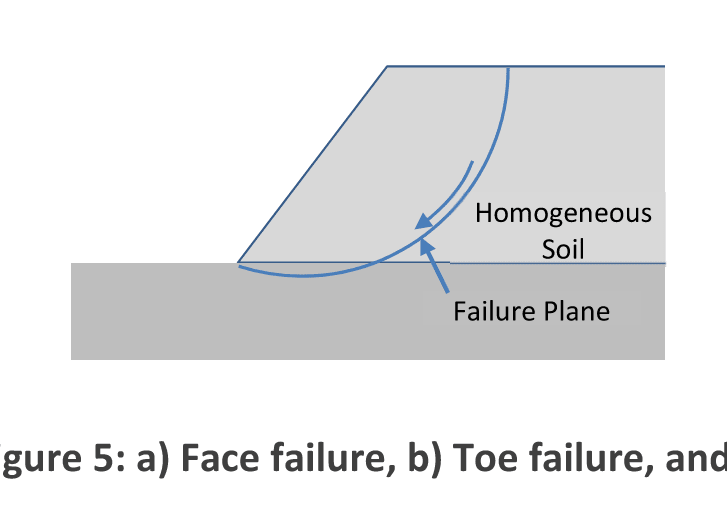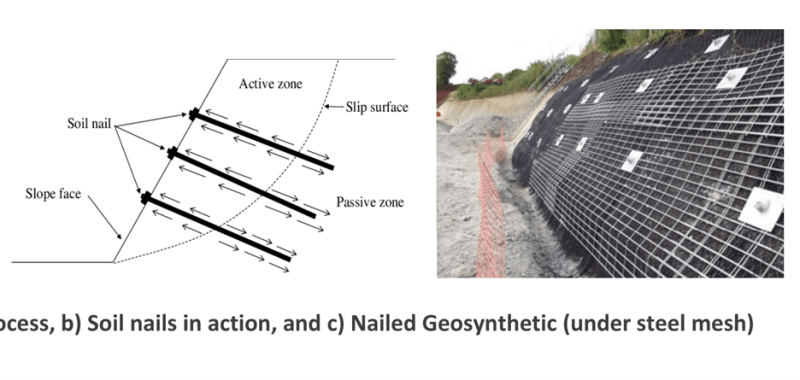I am an experienced geo-structural engineer who is considering the use of soil stabilization methods for SOE. In my area, we have recieved quite a few SOE designs that have very similar conditions:
15ft Excavation
Palisades Diabase rock at 15ft
Glacial till (silty sand/sandy silt/Fill/Not very favorable surficial soils)
Currently, the most common methods of SOE has been rock-socketed cantilevered or tied-back micro piles with timber lagging between piles. Given the hard Diabase that must be socketed, this SOE is fairly expensive ($250k-$350k for approx. 100ftx100ft hole). The heaviest cost in this SOE is the approximately 5ft - 6ft rock sockets that need to be drilled into the Hard diabase rock. It eats through several $15k bits and only 2-3 can be installed a day, and that does not include grouting. Alternatively, smaller/faster to drill micro piles require tie-backs that produce similar cost dis-advantages.
For most of these SOE's, however, we can excavate past the ROW and into the sidewalk areas which generally extend about 10ft beyond the required excavation line. Having previously worked on larger-scaled projects and performed slope stability designs, I am considering an alternative SOE method that would stabilize a 3/4:1 or even 1/2:1 (if conditions allowed for it) excavation slope in these areas. The design would incorporate a grid pattern of traditional soil nails or helical ties that would be tied to the slope using plates connected to geogrid and steel mesh.
From a design prospective, I am fairly confident that I can make the back end of the tie (behind the failure plane) work however, I am not so confident on the face side of the slope given the little amount I have to work with to grab the soils.
Before going down the rabbit hole on this and spending a few days running calculations, I wanted to get a sense from this community if a.) is this a common SOE technique, b.) is this a viable option c.) any alternative recommendations on tying the face of the soil nails/helical ties to the face of the slope and d.) Any alternative SOE recommendations?
P.S. Thank you in advance for your consideration. I have been "lurking" on this site for years and am posting for the first time. Please note that I am a Licensed Engineer with a Masters, and significant experience in Geotechnical Engineering. I am posting this question as a "sanity check" for an application of slope stabilization that I do not commonly see and, on paper, should work.
15ft Excavation
Palisades Diabase rock at 15ft
Glacial till (silty sand/sandy silt/Fill/Not very favorable surficial soils)
Currently, the most common methods of SOE has been rock-socketed cantilevered or tied-back micro piles with timber lagging between piles. Given the hard Diabase that must be socketed, this SOE is fairly expensive ($250k-$350k for approx. 100ftx100ft hole). The heaviest cost in this SOE is the approximately 5ft - 6ft rock sockets that need to be drilled into the Hard diabase rock. It eats through several $15k bits and only 2-3 can be installed a day, and that does not include grouting. Alternatively, smaller/faster to drill micro piles require tie-backs that produce similar cost dis-advantages.
For most of these SOE's, however, we can excavate past the ROW and into the sidewalk areas which generally extend about 10ft beyond the required excavation line. Having previously worked on larger-scaled projects and performed slope stability designs, I am considering an alternative SOE method that would stabilize a 3/4:1 or even 1/2:1 (if conditions allowed for it) excavation slope in these areas. The design would incorporate a grid pattern of traditional soil nails or helical ties that would be tied to the slope using plates connected to geogrid and steel mesh.
From a design prospective, I am fairly confident that I can make the back end of the tie (behind the failure plane) work however, I am not so confident on the face side of the slope given the little amount I have to work with to grab the soils.
Before going down the rabbit hole on this and spending a few days running calculations, I wanted to get a sense from this community if a.) is this a common SOE technique, b.) is this a viable option c.) any alternative recommendations on tying the face of the soil nails/helical ties to the face of the slope and d.) Any alternative SOE recommendations?
P.S. Thank you in advance for your consideration. I have been "lurking" on this site for years and am posting for the first time. Please note that I am a Licensed Engineer with a Masters, and significant experience in Geotechnical Engineering. I am posting this question as a "sanity check" for an application of slope stabilization that I do not commonly see and, on paper, should work.


